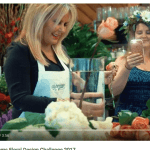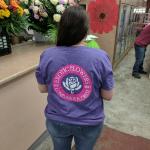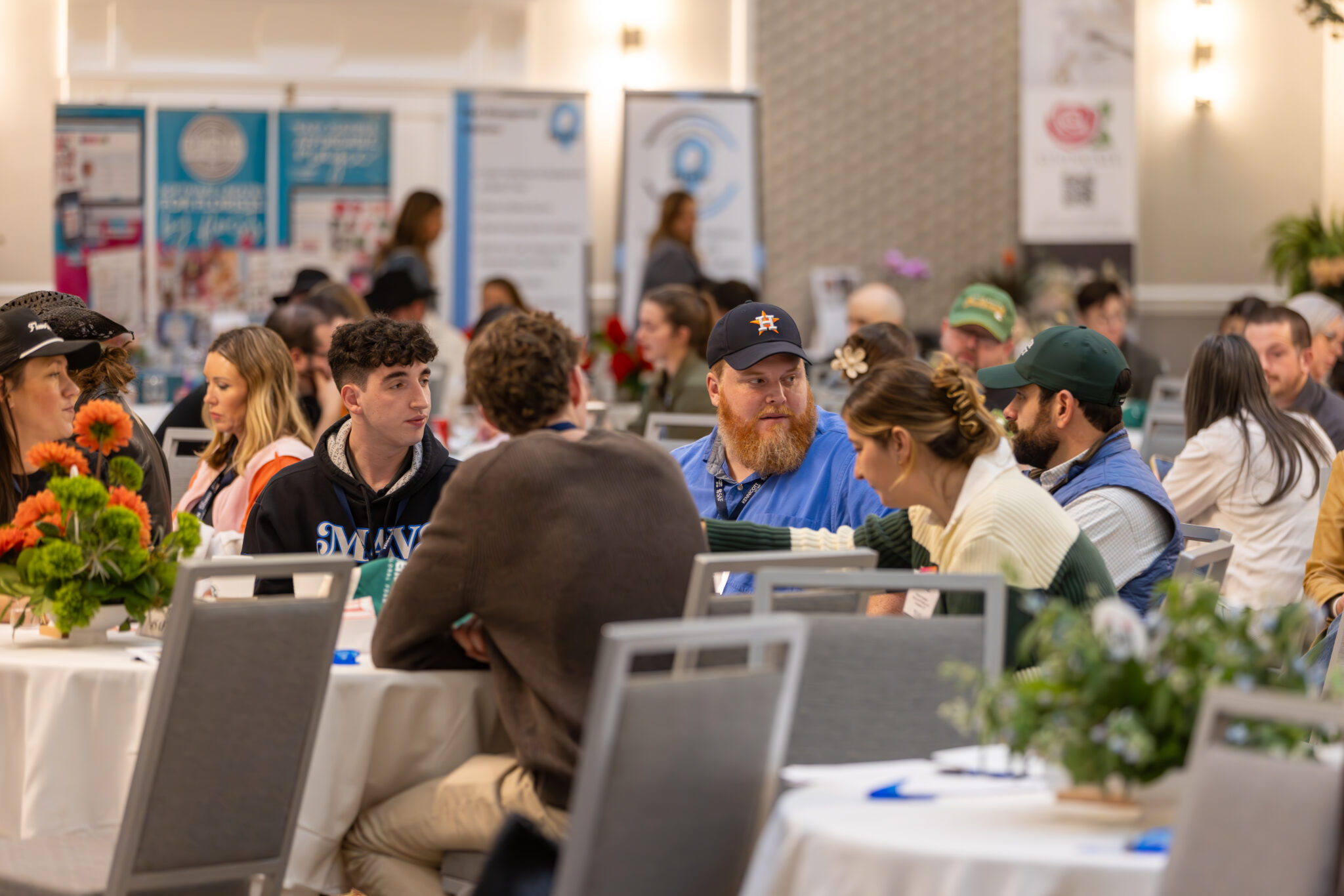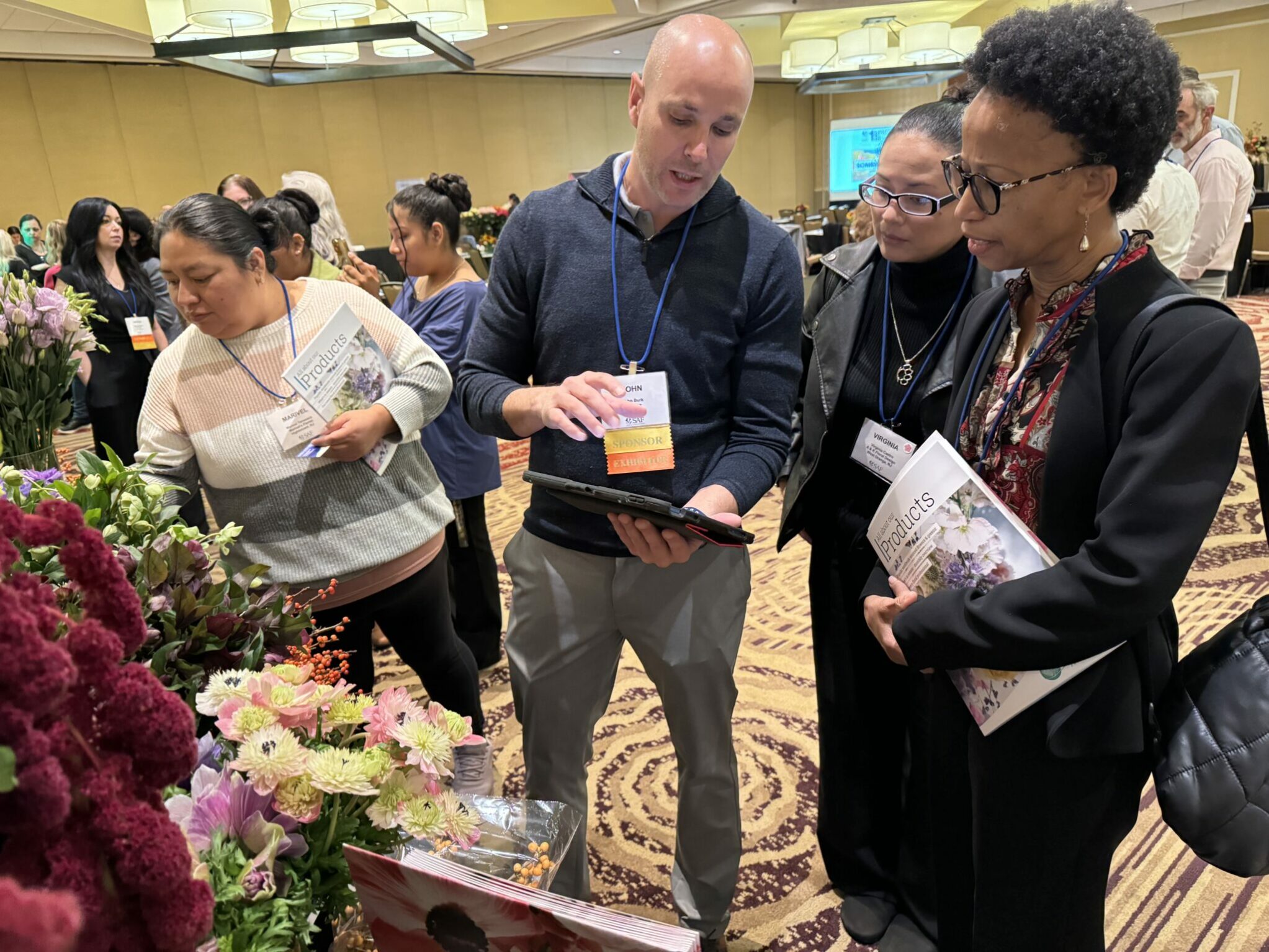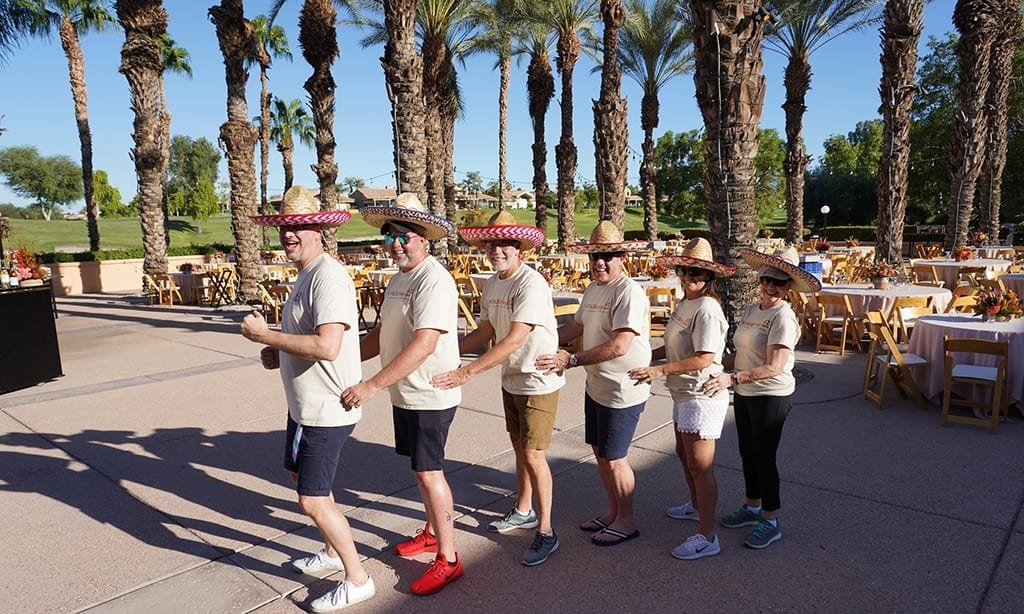
Members of SAF’s 2018 convention design team, in a lighter moment during a very busy week, shared tips this week on how to prep and execute major events like a pro.
Along with first-class education programs led by respected business leaders in and outside of the industry, the Society of American Florists’ annual convention features a whole lot of eye candy, courtesy of SAF’s design team — a talented volunteer group that works tirelessly behind the scenes to create floral art to beautify hotel conference rooms, ballrooms, dining rooms and even bathrooms.
With decades of experience apiece, the members of the SAF Palm Springs 2018 team have designed for many noteworthy occasions, including presidential inaugurations and private parties, celebrity weddings, the Philadelphia Flower Show, AIFD symposiums and Princess Diana’s funeral. They’ve overseen extravagant, multi-day events with floral budgets topping $5 million and, consequently, know a thing or two about performing under pressure.
Chaired by Brian Vetter, AAF, AIFD, PFCI, AzMF, the SAF Palm Springs 2018 design team included Ian Prosser, AAF, AIFD, PFCI, NDSF; Sylvia Bird, AAF, AIFD, PFCI, NDSF; Lorraine Cooper, AAF, AIFD, PFCI, NDSF; Chris Collum, AIFD; and Corey Harbour, AIFD, NAFD, PFCI.
Here are a few of their secrets for pulling off show-stopping event décor:
Décor Choices
You need to consider the venue when conceiving décor, Vetter said. The freelance designer in Cave Creek, Arizona, rattled off a few preliminary questions he asks to prevent chaos on the big day: “Can a piece be moved easily? Will it fit through passages? Will it stay in place in the elements? How much water will it hold? How long will it be exhibited? How fragile are the desired flower varieties?”
All of the designers prioritize grandiose focal pieces, such as flower walls, columns, arches and chandeliers, over table designs. “One large display has so much more impact for guests entering an event than 50 tiny floral accents in a room,” said Cooper, owner of Brady’s Floral Gallery in the Phoenician Resort in Phoenix, Arizona.
When a client’s budget necessitates cutting back somewhere, Prosser recommends using foliage as a table runner and accenting it with small vases and votives. “It looks deceptively lush,” said the owner of Botanica International Design Studio in Tampa, Florida. “The client will be happy, and it will keep the overall aesthetic high-end.”
As for specific blossoms, Vetter loves working with hydrangeas because of their size and perceived luxury, gerberas because of their large range of colors and dahlias, lilies and stock because of their durability. Cooper’s favorite flowers are cymbidium orchids. “They lend a clean look for any design,” she said. “And they can be used individually or kept on the stem to give more of a visual dramatic impact.”
Working Ahead
“Being organized is critical for detailed events,” Cooper said. She receives hard goods six weeks before an event, separates them according to how they’ll be used and labels them by color.
Prosser has a similar system. “We design most things in pieces back in the studio and assemble them on site,” he said. “We label stage front pieces ‘A, B, C, etc.’ and use a combination of letters and numbers to keep collections together.”
When he’s designing an event in a tent, Prosser gives the tent company advanced notice of his ideas. “If you’re hanging anything, you can ask them to put up an airline cable, which will make your life so much easier,” he said. “You just need to know the approximate weight of your installation.”
Vetter preps containers and props as early as possible. “You want to be ready to roll once flowers are processed and hydrated,” he said.
Staffing
“It’s always better to have too many rather than too few workers,” Prosser said. “If you don’t have sufficient help, you won’t finish in time, and that spells disaster.” Botanica does a lot of weddings that only allow a small window for setup. “One of our most popular venues, Oxford Exchange, is a restaurant and marketplace that’s open to the public until 5:30 p.m. We have to be able to get in and out quickly,” he said. Given the Florida climate, outdoor weddings put a similar constraint on Prosser because he can’t risk flowers succumbing to the heat.
That said, not every helper needs a floral pedigree. “We hire a lot of college boys to be the muscle,” Prosser said. “You don’t need to pay designers to unload the truck or clean up.”
“Most events require a few designers to assist, fluff and repair installations, as well as several tall people and several strong people — accompanied by several flatbeds, dollies and carts to move pieces effortlessly,” Vetter said.
Cooper favors an assembly line method. “Each category of event work — prepping and conditioning, designing, installation — is crucial,” she said. “I try not to have everyone doing every step. I prefer to separate workers so they can concentrate on their task at hand.”
Contending with Heat
Prosser, Vetter and Cooper all have ample experience dealing with intense temperatures. “For beach weddings, we use umbrellas to shelter flowers and our workers,” Prosser said. “I’m also a nag about staying hydrated. When you’re hauling all this stuff through sand, you get beat.” His team also uses spray bottles to mist flowers
Charging Appropriately
High-end weddings involve a lot of labor. “If you don’t charge for it, you will lose money, no matter how much the client is spending on flowers,” Prosser said. His contract includes a 15 percent labor fee, which covers payroll expenses and travel time. “That’s the lifesaver,” he said.
Katie Hendrick Vincent is the senior contributing editor for the Society of American Florists

